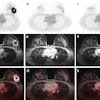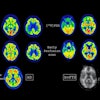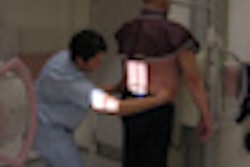PISA, Italy - Transferring medical images in this all-digital age often continues to rely on cumbersome compact discs. Help is on the way, promises Chris Lindop, who heads the Interoperability & Standards Group for GE Healthcare and is the lead author for a new integration profile in the final stages of development with the open-source association Integrating the Healthcare Enterprise (IHE).
"This is the CD Buster that will give you access to images when you want, where you want on any system capable of pulling DICOM data," Lindop promised during the IHE European Connectathon held from 11 to 14 April.
Cross-Community Access for Imaging (XCA-I) is expected to be integrated by vendors into both PACS and vendor-neutral imaging software by the end of this year. These new systems will be validated in interoperability testing at the IHE North American Connectathon in Chicago in January 2012. The new capability will progressively become available for upgrades to existing imaging systems after this testing, though some vendors can be expected to informally demonstrate the new transfer features at the RSNA meeting in Chicago in November 2011.
The XCA-I profile extends communication functions for imaging systems beyond local servers and far beyond the walls of a closed radiology network.
"This is far more than peer-to-peer exchanges; it is designed to break barriers between organizations to enable a secure image exchange," Lindop said.
Exchange may be hospital-to-hospital, community-to-community, or between massive health information enterprises. Equipped with the XCA-I retrieving gateway, a DICOM-capable computer system can pull images through an access broker, then users can display the image, store it, or share it within a network.
XCA-I is a joint development between IHE and DICOM. The IHE Integration Profile is in the final stages of public comment, and the corresponding DICOM supplement 149 is currently out for letter ballot as it moves toward approval.
"We are on the frontier of DICOM development with XCA-I, making the first step toward Web-based DICOM services," he commented.
XCA-I applies Simple Object Access Protocol (SOAP) for moving images and uses the DICOM standards for image transfer syntax that now carry more meta data. As a result, radiologists can perform searches for patient data using "fuzzy" search terms, which Lindop prefers to call cross-enterprise discovery queries.
The disparity, diversity, and dysfunctions of patient identification between systems, and even within the same hospital, continue to pose a significant challenge to sharing digital records. For instance, looser search terms mean an emergency department can enter a number of variations on a patient's name or identity in the query box to find images and medical records.



















